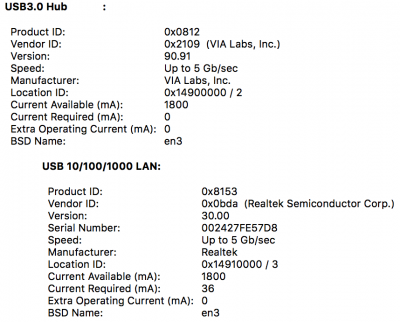RehabMan
Moderator
- Joined
- May 2, 2012
- Messages
- 181,058
- Motherboard
- Intel DH67BL
- CPU
- i7-2600K
- Graphics
- HD 3000
- Mac
- Mobile Phone
What i did not understand is, which PRT should go into the EH01/02 node, and which should go to the EH01/02-hub node in the Info.plist.
should HUBN and RHUB under EH01/2 go to the EH01/02-hub node, like the one in the Info.plist of HP-ProBook-4x30s?
Keep in mind the idea behind port injectors... they are overrides of DSDT. So.. we don't so much worry about what DSDT says (because it is already wrong), unless we are looking for reasonable guesses.
Your DSDT seems pretty messed up... so I'd start with the assumption that you have two ports directly under EH01, and PRT1 is a hub (your DSDT currently declares only PRT6 under it). Because that's the pattern I see with a lot of different computers (and usually port 2 is not used.)

